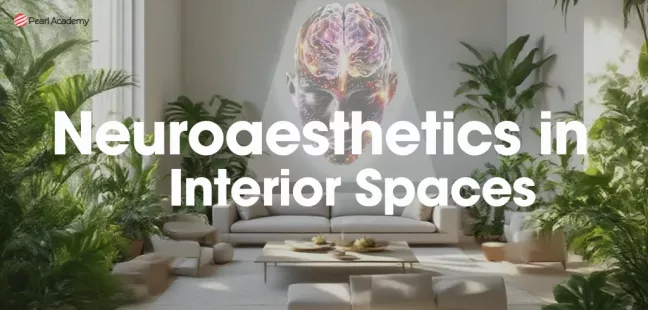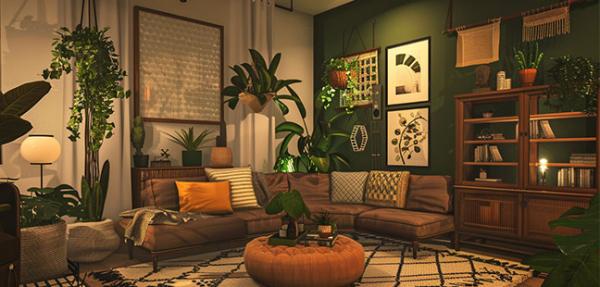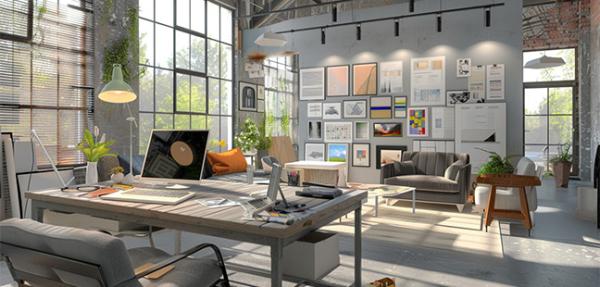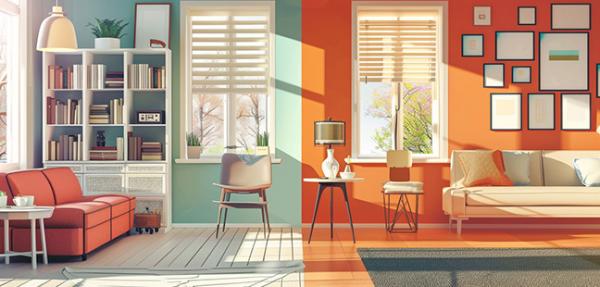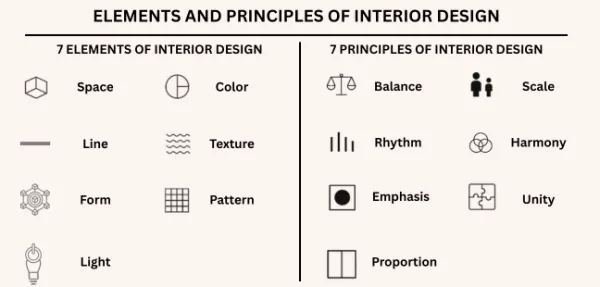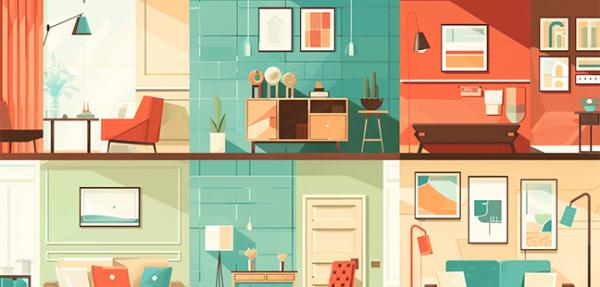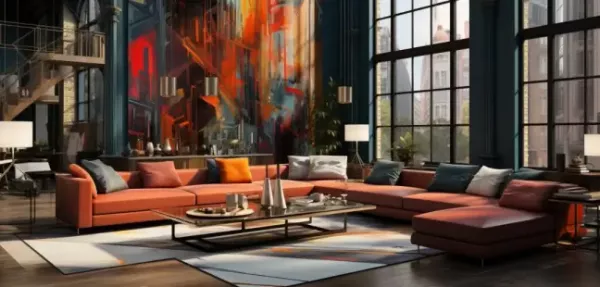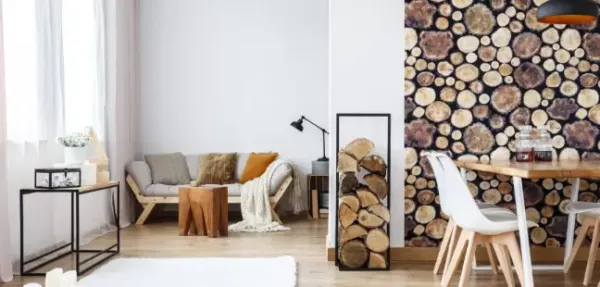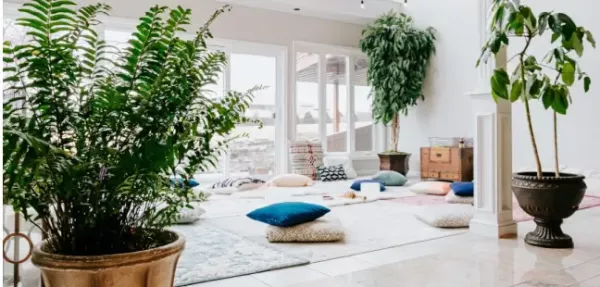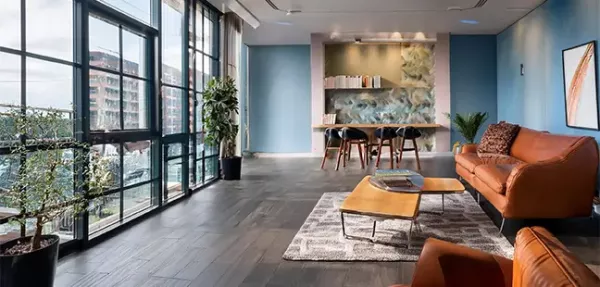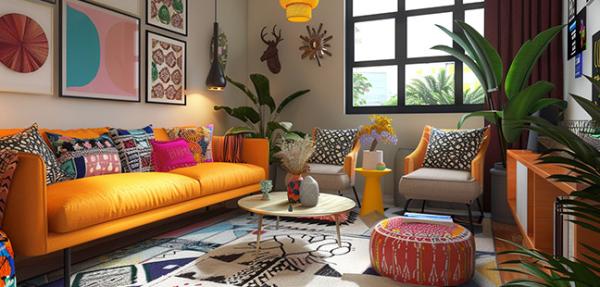The Different Paths in Interior Design Career
- Editorial Team
- Published 15-May-2025

Don’t we all love spaces decked up elegantly? The moment you enter a space that’s well decorated, well-lit, and thoughtfully arranged, you immediately appreciate the power of interior design career paths that blend creativity with technical skill and uplift your mood. The creative brain behind the positive impact of spaces is an Interior designer. With increased globalisation and exchange of cultures between countries, architectural styles are now getting exchanged. Interior designing is now more than decoration, today’s different types of interior designing open up unique career paths. It’s about sending a message, enabled with creativity and technical skill.
Whether you're wondering or exploring how to become an interior designer in India, the journey can be both exciting and rewarding. In this blog, we’ll dive into the various paths you can take, the educational routes available, and tips on what to do to become an interior designer.
Become future-ready with our Interiors Programs
Know MoreExploring Diverse Career Paths in Interior Design
Interior design is a multifaceted field that goes far beyond simply decorating a space. For anyone considering a career in interior designing, the opportunities are vast and varied. Whether you're exploring how to be an interior designer or wondering how to become an interior designer in India, understanding the different career paths available is a vital first step.
1. Residential Design
Residential interior design focuses on creating functional, aesthetically pleasing living spaces. This path is ideal for those who love working on homes, apartments, and personal spaces. It involves:
- Space Planning & Functionality: Transforming floor plans to optimize living areas.
- Personalization: Tailoring design elements to match the lifestyle and personality of the client.
- Trends & Innovations: Staying updated with the latest design trends to ensure modern yet timeless spaces.
For many asking what to do for interior designer roles, starting with residential projects provides a solid foundation in understanding client needs and developing practical design solutions.
2. Commercial & Corporate Design
Commercial design offers a robust career path for those interested in a more dynamic environment. This specialization involves designing spaces like offices, retail stores, restaurants, and hotels. Key aspects include:
- Brand Integration: Crafting environments that reflect a company’s brand identity.
- Function Meets Form: Balancing practicality with aesthetic appeal to enhance both employee productivity and customer experience.
- Large Scale Projects: Managing expansive projects that often require teamwork and project management skills.
This area is particularly appealing if you're exploring interior designer career options that combine creativity with business strategy.
3. Hospitality & Leisure Design
If you're passionate about creating memorable experiences, hospitality design might be the perfect niche. This field covers the design of hotels, resorts, restaurants, and entertainment venues. It emphasizes:
- Ambiance Creation: Designing spaces that evoke a specific mood or atmosphere.
- Customer Experience: Enhancing guest satisfaction through innovative space utilization and comfort.
- Cultural Influence: Incorporating local art, traditions, and aesthetics to give each project a unique identity.
Those questioning how to become an interior designer often find that hospitality design not only offers creative freedom but also an opportunity to work on high-profile projects with international appeal.
4. Sustainable & Eco-Friendly Design
Sustainability is an increasingly important aspect of interior design. This career path focuses on eco-friendly practices and the use of sustainable materials. Highlights include:
- Green Materials: Prioritizing the use of renewable, non-toxic, and recycled materials.
- Energy Efficiency: Designing spaces that optimize natural light and reduce energy consumption.
- Environmental Impact: Creating designs that have a positive impact on both the environment and community well-being.
For aspiring designers wondering is interior design a good career in India, the sustainable design path is particularly relevant, given the growing global focus on environmental responsibility and green living.
5. Speciality Design Fields
There are several specialized niches within interior design that allow you to focus on a particular industry or style. These include:
- Healthcare & Educational Design: Creating environments that promote healing or enhance learning.
- Exhibition & Retail Display: Designing spaces that capture attention and drive engagement in museums, galleries, or retail settings.
- Lighting & Furniture Design: Specializing in the elements that define a space’s character through bespoke pieces and lighting schemes.
These niches provide tailored career options for those asking how can I become interior designer or how can I be interior designer, giving you the chance to focus on your specific area of interest.
6. Freelancing & Consultancy
In today’s digital age, many interior designers are choosing the freelance route or setting up consultancy firms. This path offers:
- Flexibility: Manage your own schedule and choose projects that align with your creative vision.
- Diverse Clientele: Work with a range of clients—from homeowners to corporations—and build a diverse portfolio.
- Entrepreneurship: Establish your own brand and business, answering the question what to do to become an interior designer through self-driven innovation.
Freelancing allows you to be adaptive and responsive to emerging trends, making it a rewarding option if you're considering how to become an interior designer outside traditional employment structures.
Pursue Interior Design Course
If you're serious about becoming a successful interior designer, pursuing a B.Des in Interior Architecture Design is your gateway to mastering these essential skills. Programs like the one offered at Pearl Academy provide a comprehensive blend of theoretical knowledge and hands-on experience, ensuring you're ready to thrive in the industry.
- Hands-on learning: Work on real-life projects to gain practical experience.
- Exposure to the latest tools: Learn industry-standard design software.
- Networking opportunities: Connect with industry professionals, opening doors to future career opportunities. To plan your studies, see our detailed post on Interior Design Course Duration, Fees, Scholarships & Faculty.
Take Your Knowledge to the Next Step with M.Des in Interior Design
For professionals who already have a background in design and want to deepen their expertise, a master's degree is an excellent option. This advanced program is ideal if you're considering how to become an interior designer in India or anywhere else, as it focuses on:
- Advanced Design Concepts: Delving into innovative design thinking, research, and project management.
- Specialized Skills: Developing niche skills such as luxury interiors, sustainable design, and digital fabrication.
- Global Perspective: Preparing for leadership roles in the industry with an international curriculum.
Having an interior design degree helps you gain the specialised knowledge, excel with global exposure, and get placed with eminent designing firms, and more. If you are an interior design fresher stepping into the world of designing that’s daunting but also exhilarating, you can always draw inspiration from the design giants who have come before you.
To know of them, click on our blog “Top 10 Interior Designers in India”.
How to Become an Interior Designer
Many aspiring designers wonder how can I be an interior designer. Here are some essential steps to guide you on your journey:
- Develop Your Skills: Make use of your time with online courses, workshops, or a formal degree program. Research shows that structured training can significantly enhance your ability to understand what to do to become an interior designer.
- Gain Practical Experience: Internships, freelance projects, or assisting established designers are your key to getting the exposure and experience to excel in design projects.
- Build a Portfolio: Showcase your best work in a unique, personalised portfolio for your employers. Make sure to include variety of projects. Let your works scream volumes about you as a designer! To sharpen your craft, explore the Top 10 important skills for interior designers.
- Stay Updated on Trends: Be active on social media, follow the accounts of major interior designers from all over the world. Attend seminars, conferences to expand your knowledge on what’s new in the interior designing world.
- Network: Never lose on an opportunity to connect with industry experts. Go to talks, read as much as you can, send connect requests on LinkedIn, emails, and more.
Interior design is a great career option to let your ideas, creativity, and vision transform the lives of those around you. Prepare yourself with these must-know Interior Design Interview Questions and Answers to step confidently into your career.
Must Read: Interior Design Courses After 12th

Student Guidance Center: Our Counselors are Just a Click Away.
Conclusion
Embarking on a career in interior designing offers numerous paths, each with its own set of challenges and rewards. Whether you’re just starting and wondering how to be an interior designer, or you’re looking at advanced studies to explore what to do to become an interior designer, the journey is filled with opportunities for growth and innovation.
For a robust educational foundation, consider exploring Pearl Academy’s programs. Their bachelor’s degree in interior architecture design provides essential skills for beginners, while the Master's Degree in Interior Design offers advanced training for seasoned professionals.
Suggested for You:
Tags
- #Interiors
Pearl Admission Enquiry
Subscribe to Pearl Blogs
By clicking the "Subscribe" button, I agree and accept the privacy policy of Pearl Academy.









